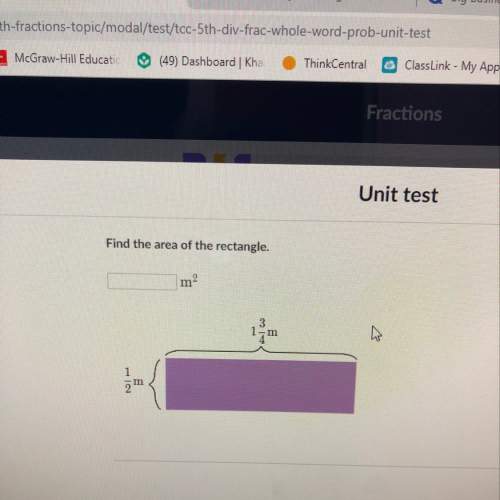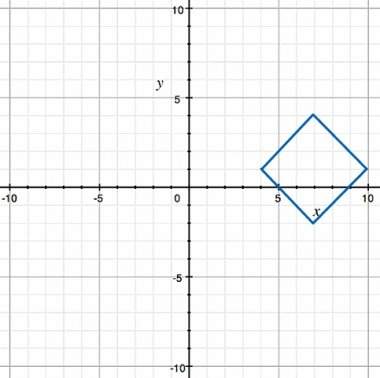
Mathematics, 23.04.2021 01:00 priceb17
James cut out four parallelograms, the dimensions of which are shown below. Parallelogram 1 length: 12 in. width: 15 in. diagonal: 20 in. Parallelogram 2 length: 16 in. width: 30 in. diagonal: 34 in. Parallelogram 3 length: 20 in. width: 21 in. diagonal: 29 in. Parallelogram 4 length: 18 in. width: 20 in. diagonal: 26 in. James put the parallelograms together so one vertex from each paper exists on a point, as shown in the circle. 4 parallelograms are put together so that one vertex from each paper exists on a point. Which statement explains whether or not the parallelgrams can be put together so each occupies one-quarter of the area of the circle without overlapping any other pieces? Check all that apply. The quadrilaterals can be placed such that each occupies one-quarter of the circle. The quadrilaterals cannot be placed such that each occupies one-quarter of the circle because the vertices of parallelogram 1 do not form right angles. The quadrilaterals cannot be placed such that each occupies one-quarter of the circle because the vertices of parallelogram 2 do not form right angles. The quadrilaterals cannot be placed such that each occupies one-quarter of the circle because the vertices of parallelogram 3 do not form right angles. The quadrilaterals cannot be placed such that each occupies one-quarter of the circle because the vertices of parallelogram 4 do not form right angles.

Answers: 2
Another question on Mathematics

Mathematics, 21.06.2019 14:00
Bob’s bank charges him a $3.15 service fee every time he uses an out-of-network atm. if bob uses an out-of-network atm an average of three times every two weeks, how much will he pay in service fees over the course of a year? a. $327.60 b. $109.20 c. $491.40 d. $245.70 select the best answer from the choices provided a b c d
Answers: 1


Mathematics, 21.06.2019 22:30
Proving the parallelogram diagonal theoremgiven abcd is a parralelogam, diagnals ac and bd intersect at eprove ae is conruent to ce and be is congruent to de
Answers: 1

Mathematics, 22.06.2019 03:00
Monthly water bills for a city have a mean of $108.43 and a standard deviation of $36.98. find the probability that a randomly selected bill will have an amount greater than $173, which the city believes might indicate that someone is wasting water. would a bill that size be considered unusual?
Answers: 3
You know the right answer?
James cut out four parallelograms, the dimensions of which are shown below. Parallelogram 1 length:...
Questions













Computers and Technology, 19.02.2020 00:24




English, 19.02.2020 00:24



Mathematics, 19.02.2020 00:25





